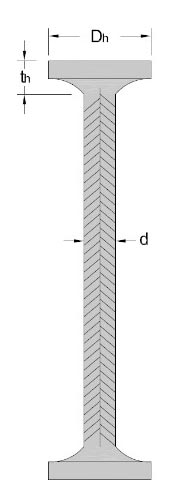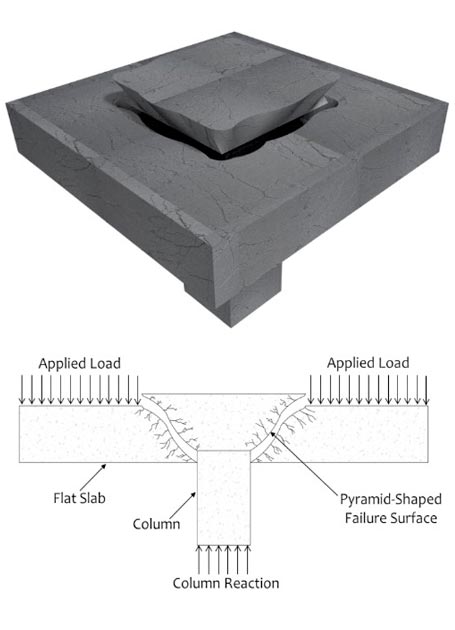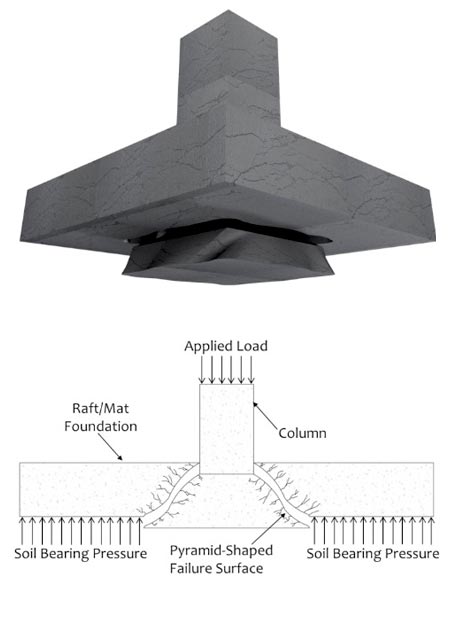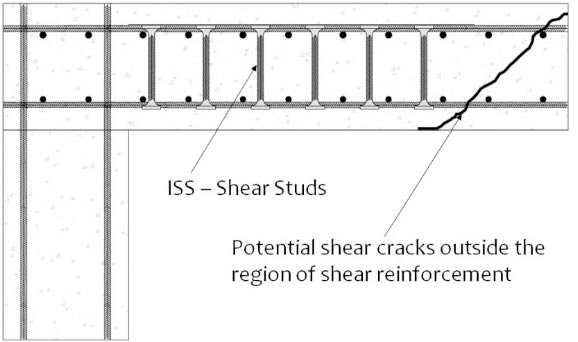Shear Studs
Dimensions of ISS – Shear Studs:
Conventional vs. Incon Studs
Conventional Shear Reinforcement Methods:
Bent-Up Bars:
- Increase reinforcement congestion.
- Require special detailing.
- Increase cut and bend time.
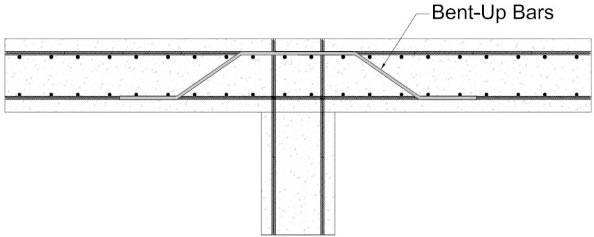
Closed Stirrups:
- Increase reinforcement congestion.
- Require long installation time.
- Increase cut and bend time.
- Labor Intensive.

Inclined Stirrups:
- Increase reinforcement congestion.
- Require special detailing.
- Increase cut and bend time.
- Increase installation time.
- Increase design duration due to the additional calculations involved.
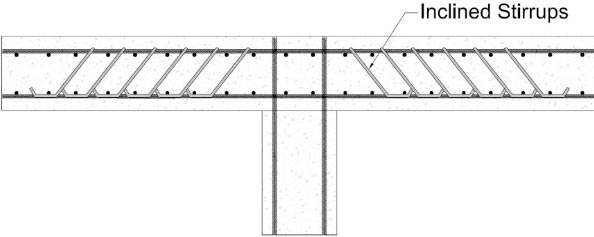
Shearheads:
- Act as barriers between bars.
- Require special detailing.
- Increase reinforcement congestion.
- Increase material cost.
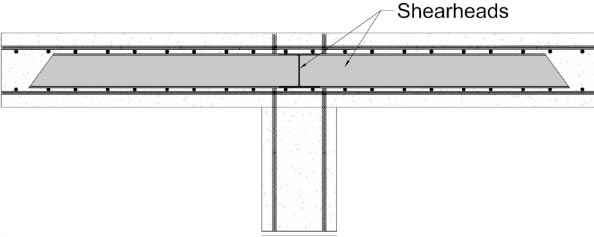
ISS – Shear Stud Assemblies:
- ISS – Shear Studs are manufactured under the strictest Canadian Quality Control guidelines and in accordance with ISO 9001:2008 Quality Assurance and Management System.
- ISS – Shear Studs provide an outstanding structural performance compared to the conventional shear reinforcement due to the enhanced mechanical anchorage provided by their headed ends.
- This improved end anchorage controls the shear crack width and therefore enhances aggregate interlock between the two shear faces.
- When double headed studs are used in flat slabs with continuous top and bottom reinforcement over the column, this also improves the ductility and therefore the shear force at which the diagonal shear crack forms.
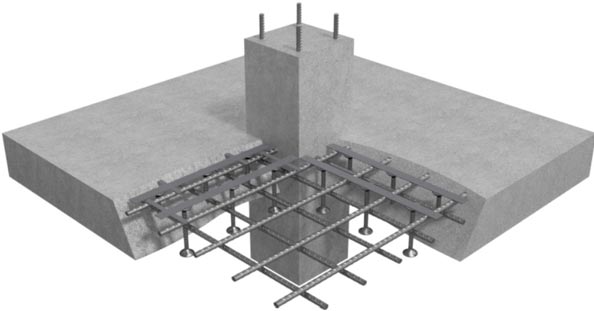
Main Advantages:
- Reduce reinforcement congestion.
- Decrease Construction Time.
- Eliminate extra cut and bend works.
- Enhance structural performance.
- Allow greater design flexibility.
- Reduce slab thickness.
- Provide enhanced anchorage to the slab.
- Ensure factory quality control.
- Reduce material and labor cost.
- Easy to design using ISS Software.
- Easy to check and modify arrangement.

Characteristics of ISS – Shear Studs:
- ISS – Shear Studs are mechanically anchored at each end by a head bearing against the concrete in such a way that it is capable of developing the full yield strength of the bar.
- The dimensions of ISS – Shear Studs are chosen to satisfy the requirements of ASTM A1044, ACI 318-14 and CSA A23.3-14 by ensuring that the area of the head is at least ten times the cross-sectional area of the shank.
- The length of ISS – Shear Studs are selected to cover the maximum possible depth in the slab since potential shear cracks can develop at any location over the stud height.
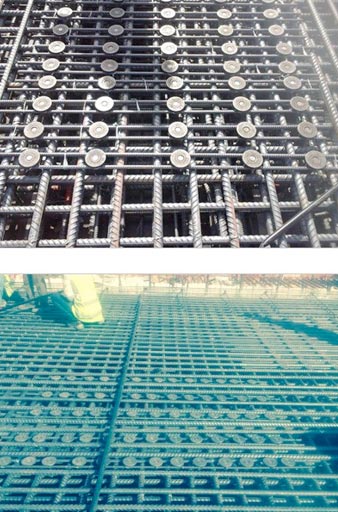
Applications
Punching Shear in Flat Slabs:
- A flat slab is a concrete slab of uniform thickness reinforced in two or more directions and supported directly by columns without beams or girders.
- Shear at column locations governs the thickness of a flat slab. Punching shear is the potentially high shearing stress developed by the reactive force of a column on a reinforced concrete slab.
These slabs may fail locally under the concentrated load, i.e. a concrete pyramid together with the load or column is punched out from the slab. - ISS – Shear Studs are used as shear reinforcement to significantly increase the shear capacity of slabs and eliminate premature failure.
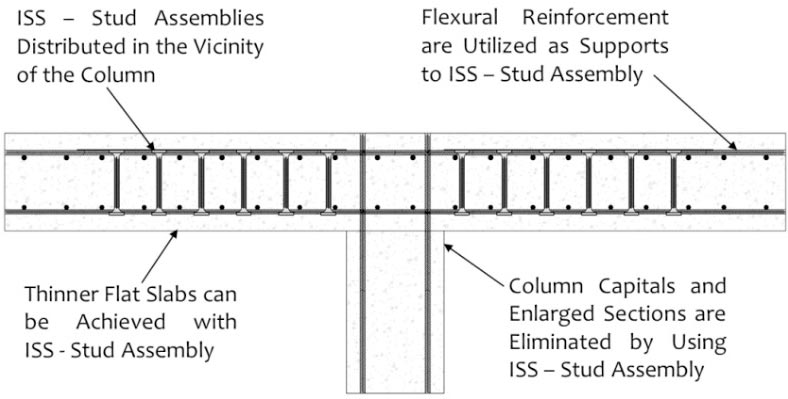
Punching Shear in Raft / Mat Foundations:
- A raft/mat foundation is a thick, heavily reinforced concrete slab that serves as a single monolithic footing for a number of columns or an entire building.
- Due to the existence of large soil pressure under the foundations, high shear stresses are developed in the vicinity of the columns. ISS – Shear Studs are used in order to overcome such stresses without increasing the thickness of the foundation.
- When shear studs are not used, the foundations may fail locally under the concentrated load in a manner that causes penetration of the columns through the foundations.
- ISS – Shear Studs are used as shear reinforcement to significantly increase the shear capacity of foundations in the vicinity of the columns and to eliminate premature failure at those sections.
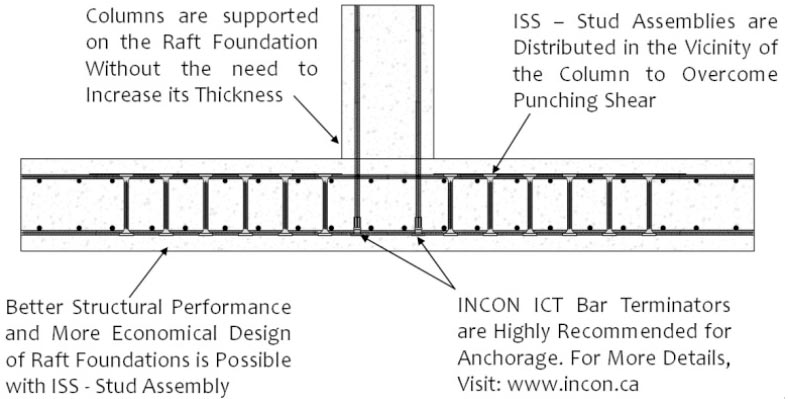
Shear Failure Prevention with ISS – Shear Studs:
First Mechanism:
Potential shear cracks are within the region of shear reinforcement.
- ISS – Shear Studs are required to intercept shear cracks and prevent them from widening.
Second Mechanism:
Potential shear cracks are outside the region of shear reinforcement.
- Providing ISS – Shear Studs can hinder the formation of shear cracks within the shear reinforced zone and transfer them to the outer region where concrete possesses sufficient contact surface to resist shear stresses alone.
Installation of ISS – Shear Studs:
When installing ISS – Shear Studs on site, the rails can be fitted as follows:
Top down:
- Install the upper and bottom layers of flexural reinforcement.
- Place ISS – Shear Studs through the reinforcing bars according to the structural drawings.
- Ensure that the base rail rest on the uppermost reinforcing bars either directly or indirectly using special ISS supporting plates. These plates can be provided separately on request.
- Connect the base rail to the flexural reinforcing bars using tie wires.
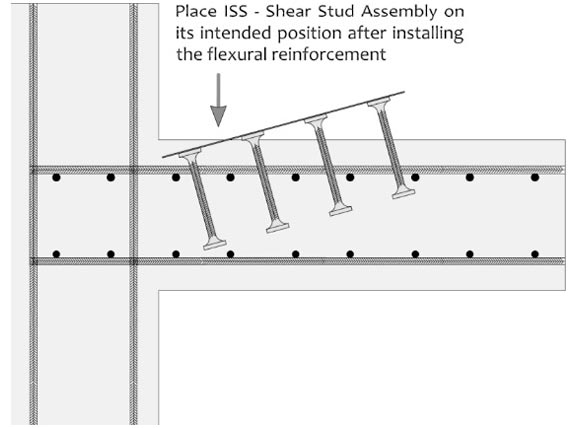
Bottom up:
- Attach ISS – Plastic Chairs on the base rail depending on the required clear concrete cover.
- Place ISS – Stud Assembly on their intended location to form the shear arms in the slab around the columns.
- Fix the shear studs to the formwork using an approved method by the engineering team.
- Install the flexural reinforcement according to the structural drawings.

Services
Design Services:
- Our design service enables us to accurately estimate project costs and speedily provide quotations.
- In addition to this service, INCON also provides design software for clients who prefer to produce their own calculations and layouts.

Delivery to Site:
- After preparing ISS – Shear Stud assemblies, they will be packaged in containers clearly marked with the assembly part number and description to facilitate the installation process on site.
- The description provided on each package indicates the base rail width, thickness and length, and the number of headed studs and their diameter for each rail.


